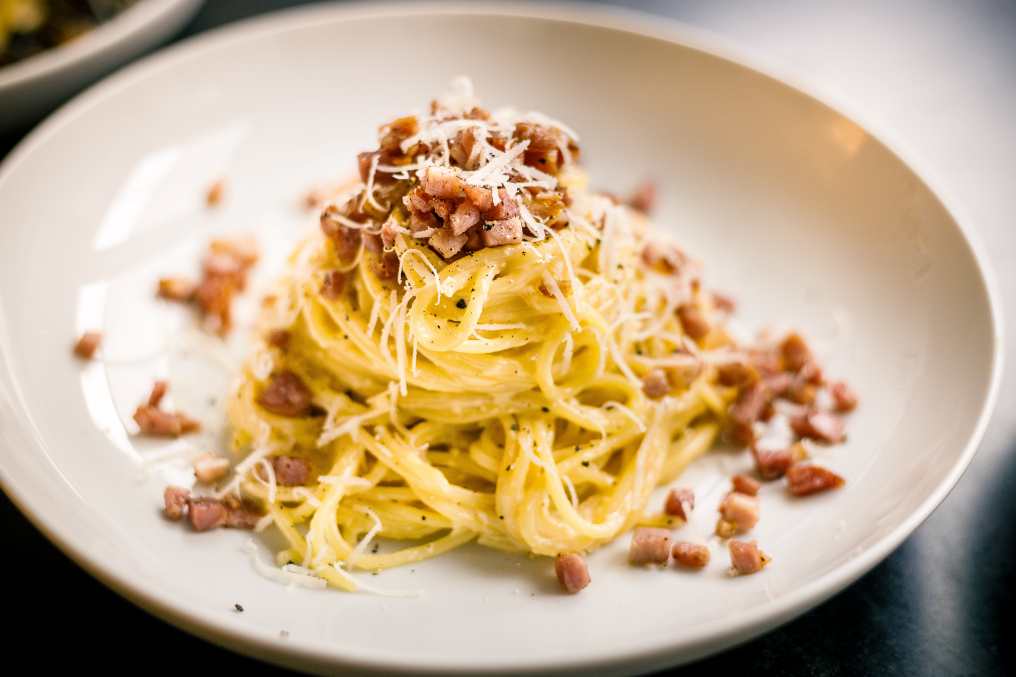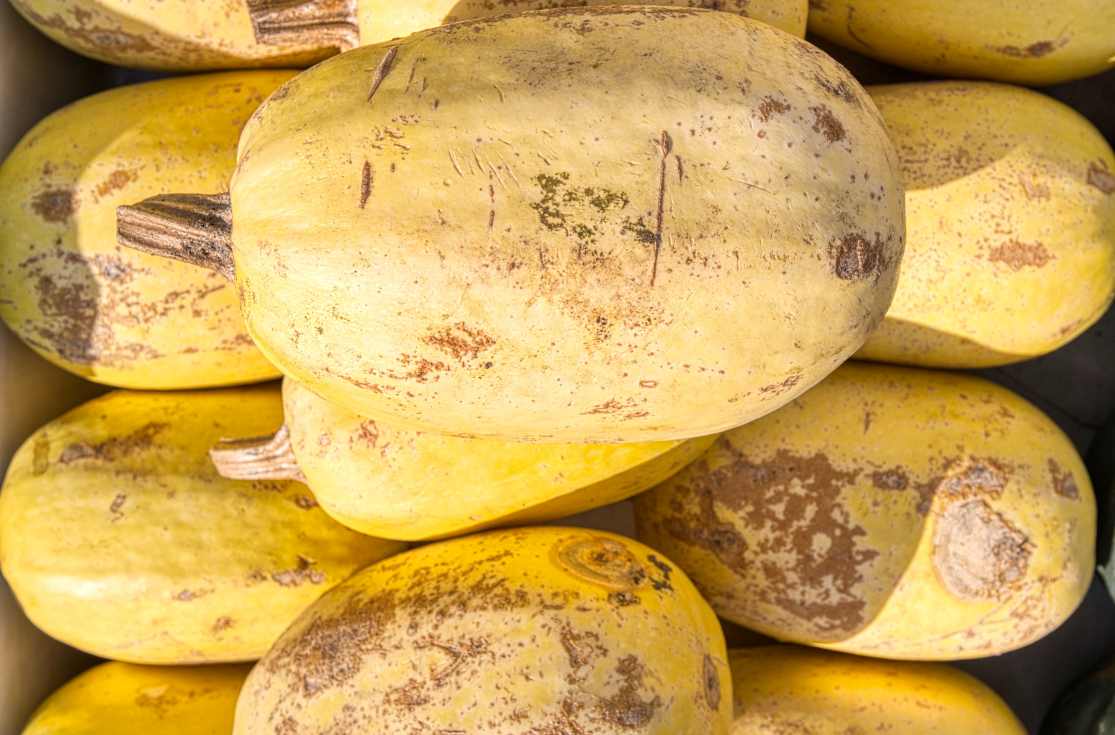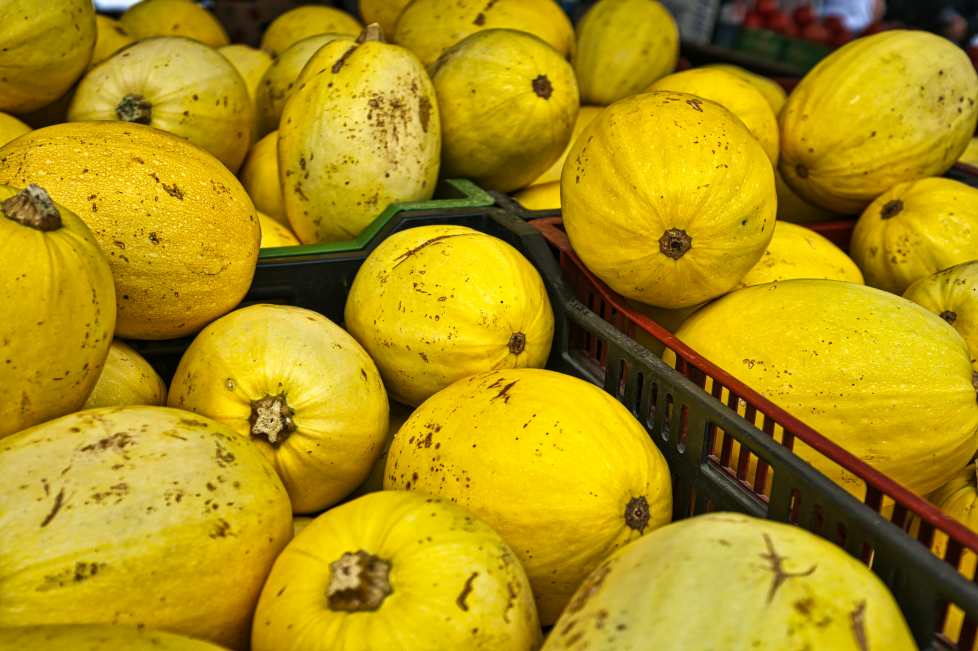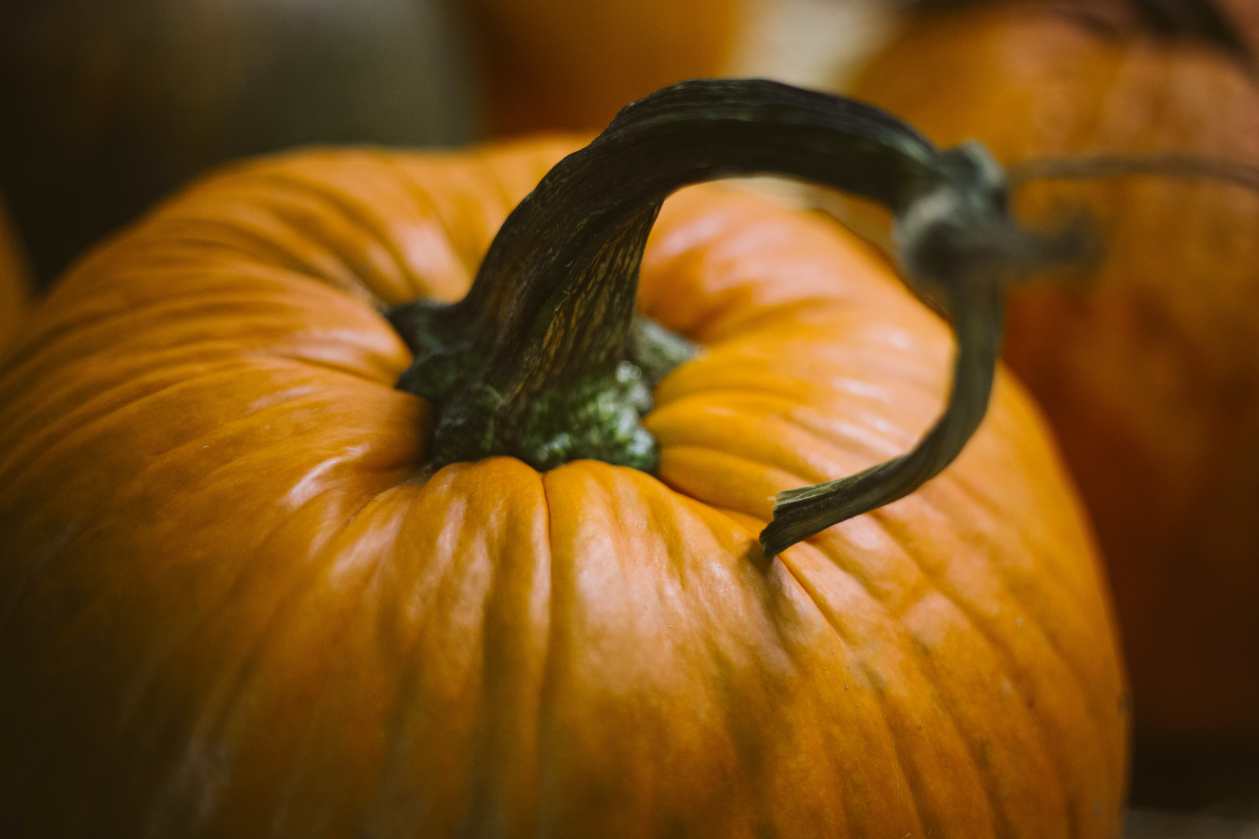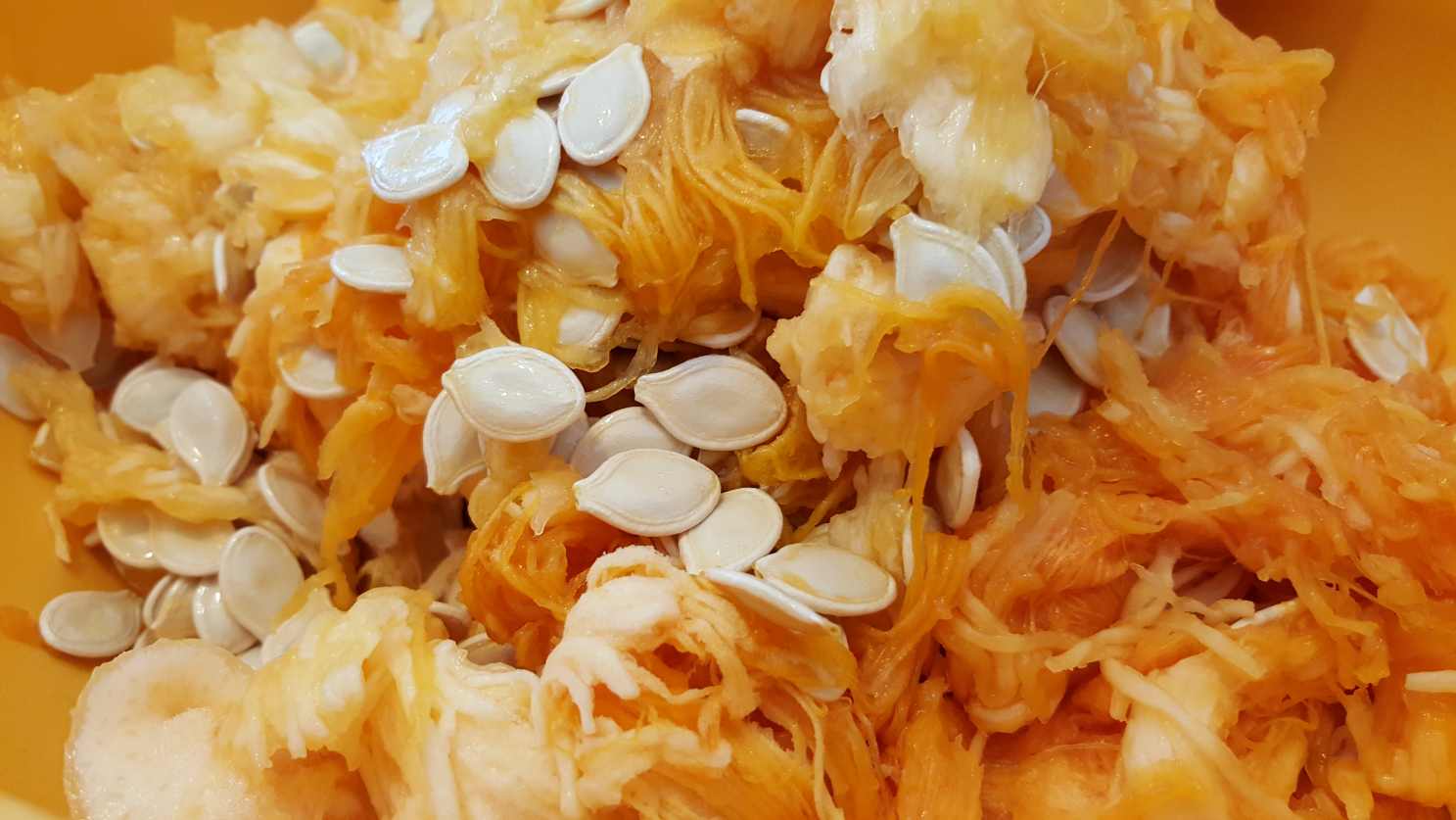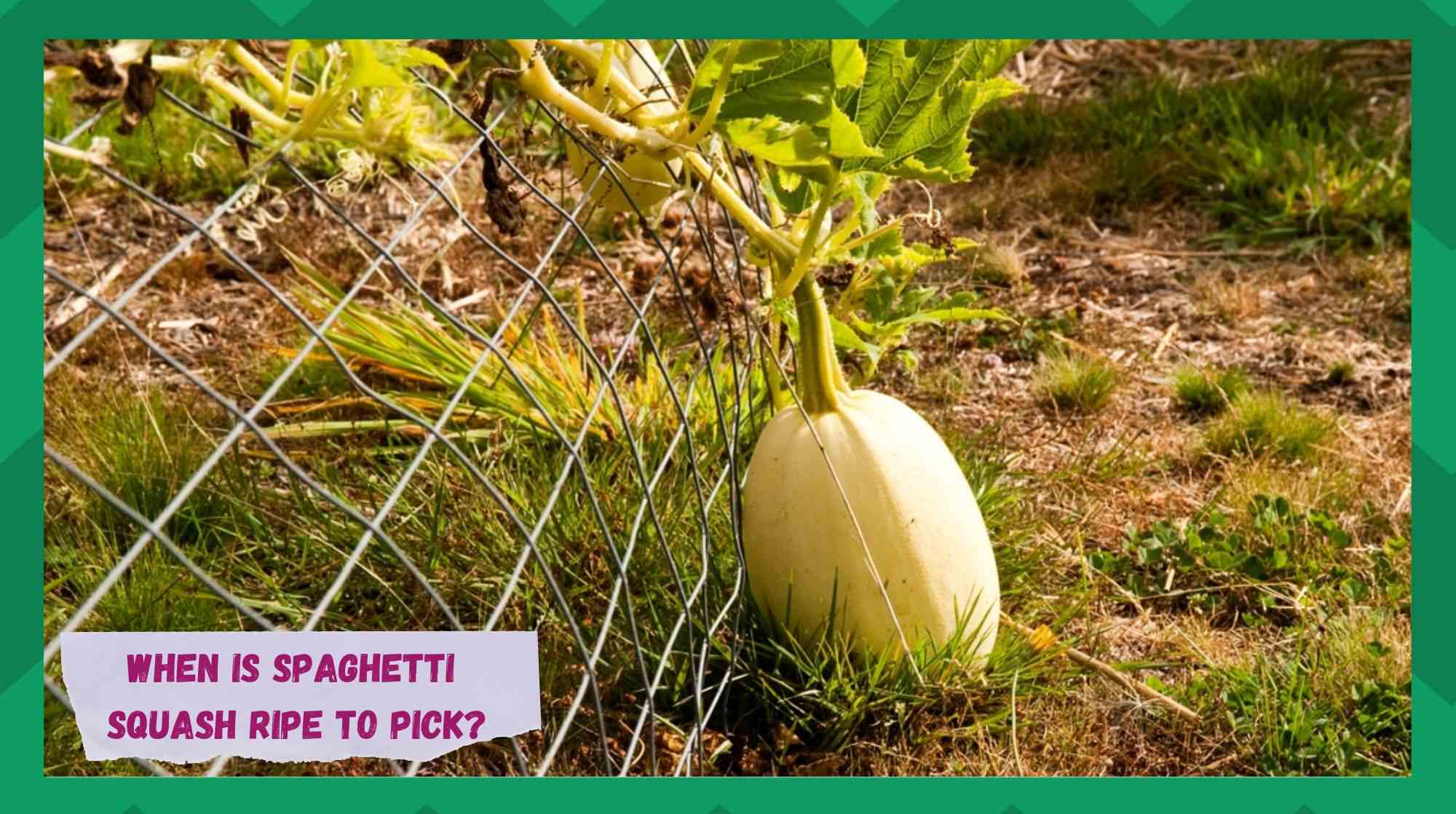
Spaghetti squash, commonly known as vegetable spaghetti, is a winter squash from the Cucurbita pepo subsp pepo group. It comes in an oblong shape and a range of colors, including ivory, orange, and yellow.
It is a medium-sized fruit with relatively large seeds. It has a mild taste and can be eaten raw or used in recipes.
Spaghetti squash is one of the most nutrient-dense fruits, meaning it’s loaded with vitamins and minerals despite being low in calories.
It has a high fiber content, which lowers cholesterol levels and regulates sugar levels in your body. Furthermore, since spaghetti squash has a low-calorie count, it is an excellent food for people looking to lose weight.
With that out of the way, any farmer would tell you the importance of timing when it comes to harvesting. If you are growing spaghetti squash in your yard, you must pick it timely.
If you harvest it early, it will not be ripe enough to be consumed. On the other hand, harvesting it too late will lead to dark spots on its flesh.
If you do not know when to pick spaghetti squash, you are not alone. Many gardeners don’t know when it is ready to pick, and they often end up harvesting it early or waiting too long. In this guide, we will discuss when and how to harvest spaghetti squash for the perfect taste. Let’s dig deeper!
When is Spaghetti Squash Ripe to Pick?
It turns out that there are several signs that help you determine whether your spaghetti squash is ripe for picking or not.
- Color of Spaghetti Squash
The first thing to look for while picking spaghetti squash is the color of the fruit. Ideally, you want to pick it when the color is between creamy-white and golden. If it is still green, it means that it has not fully ripened yet. So, have a look at your spaghetti squash and make sure it is not green before harvesting.
Apart from that, unripe spaghetti squash will have clear stripes on its skin. So, if you see stripes on your spaghetti squash, it would be better to give it a few more weeks to achieve ideal ripeness.
Furthermore, the glossiness is another sign that signifies that the spaghetti squash is unripe. When fully ripened, spaghetti squash has a dull color.
- Check Firmness of The Skin
Experts suggest that you should not rely on one indicator before harvesting. Therefore, even if your spaghetti squash has a golden color, consider checking its firmness to gain a deeper insight.
You can also check the firmness of the skin of your spaghetti squash to figure out whether your spaghetti squash has fully developed or not. You can perform the thumbnail test for this purpose. Press it with your fingernail and check to see if the fingernail can pierce its skin.
A fully developed spaghetti squash will have hard skin. So, if your fingernail penetrates easily, it means that the spaghetti squash needs a few more days to ripen.
Depending upon the softness of the fruit skin, it can take somewhere around 3 to 5 weeks for the squash to be ready for picking. On the contrary, if your fingernail hardly makes a mark on its skin, take it as a green signal and harvest the spaghetti squash.
- Check the Stem
Make sure to check the stem before harvesting your spaghetti squash. If it appears dry and brown, the spaghetti squash is ready to pick. If it is green, let it ripen for a few more weeks.
- Mushy Spots
Visually inspect the spaghetti squash for any dark or mushy spots. If it feels soft or has bruises, it indicates that the spaghetti squash has overripened. In addition to that, overripened spaghetti squash will likely have mold and won’t be edible.
It would be a good idea to check the date mentioned on the seed package before picking spaghetti squash.
Depending on its variety, spaghetti squash takes somewhere between 90 to 120 days to achieve perfect maturity. However, make sure to check the aforementioned symptoms even if it has been planted for 100 days.
How to Harvest Spaghetti Squash?
As mentioned earlier, it is important to let the fruits ripen before picking them. But what if frost is in the forecast? Well, the good news for you is that spaghetti squash can continue to ripen after it is picked. The more mature the spaghetti squash is, the better it will ripen after being harvested.
It is advised to use a pair of pruners to harvest the spaghetti squash. It would be a good idea to leave about three to four inches of stem to allow for better storage.
And yes, be careful while harvesting it as its top part is sensitive and gets damaged easily. Once done, consider rinsing it to get rid of the garden soil.
To let your spaghetti squash ripen, place it in an area that receives enough sunlight. Remember that it hasn’t developed yet, so it still needs sunlight to ripen. It is recommended to turn them every few days to make sure all its sides receive sunlight.
Curing Spaghetti Squash
Curing is a process in which spaghetti squash is kept in specific conditions for a short time before storage. Curing is important for freshness and taste, and it allows you to store your fruits for a long time. So, if you want to use spaghetti squash throughout winter, you must cure it properly before storing it.
One thing to bear in mind is that moisture is not your friend when it comes to storing spaghetti squash. Many landscapers make a common mistake of rinsing the spaghetti squash straight away after harvesting.
If exposed to moisture, the spaghetti squash will become soft and will likely rot soon. So, use a cloth or brush to get soil dust off your spaghetti squash.
Once you have cleaned spaghetti squash, keep them in a warm and well-ventilated area. Remember that proper ventilation is vital for curing. You can place them in your yard, but make sure to relocate them if rain is forecasted.
Curing usually takes between 10-14 days. Once they have been cured, you can store them in your refrigerator. When stored this way, they can stay good for up to three months.
The Bottom Line
Spaghetti squash is loved for its mild taste and wonderful health benefits. They take more or less 100 days to mature. The appearance of the spaghetti squash can tell you whether they are perfectly ripe or not.
If they are green and have stripes, they need more time to ripen. If you intend to store spaghetti squash, consider curing them.

